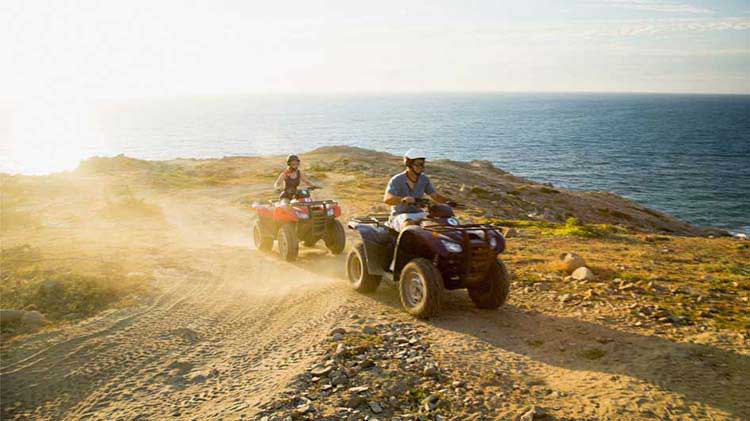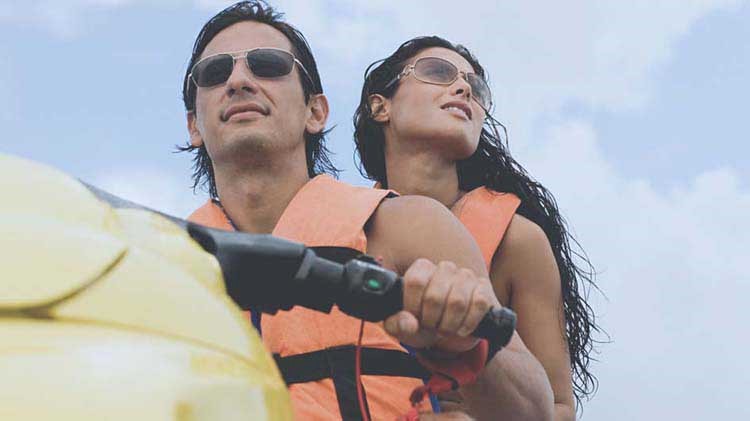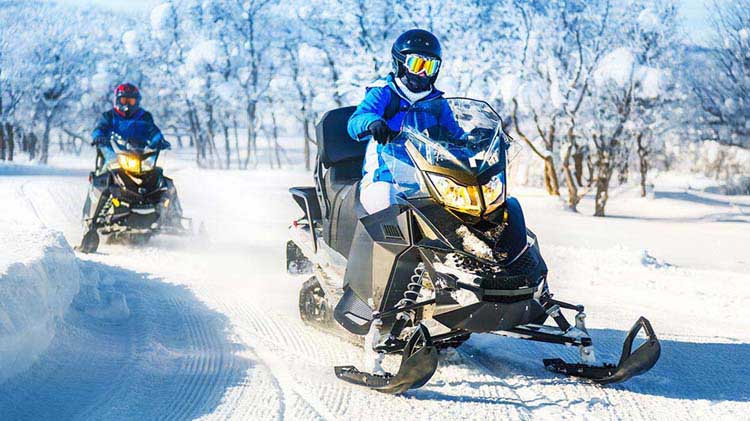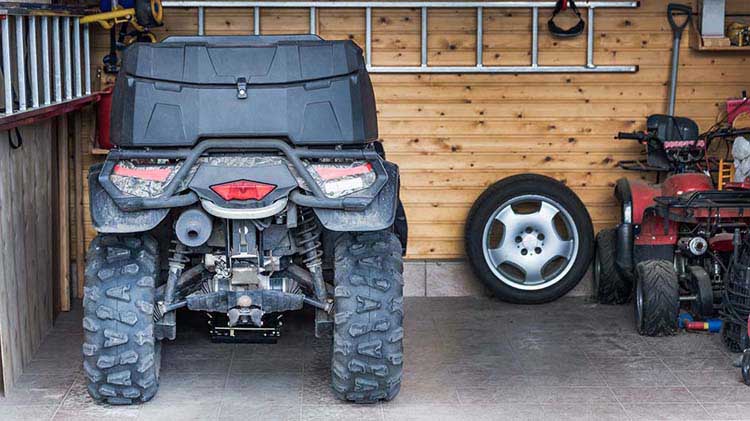ATV safety tips
Taking the proper ATV safety steps can help keep you and your family safe while you enjoy your riding experience.
All-terrain vehicles (ATVs) are a great way to have fun and enjoy the outdoors. But the operation of one requires proper instruction and preparation.
According to the U.S. Consumer Product Safety Commission (CPSC) per their November 2021 report, ATVs caused 1,566 fatal incidents from 2016 through 2018. Overturning and collisions with stationary objects or other vehicles were the major hazards resulting in these fatalities.
Whether you're doing daily chores around the farm or weekend trail rides, take the proper steps to be safe when using an ATV.
Before you head out on your ATV
Have an agent contact me
with a quote
- Consider an ATV training course - ATVs can travel at more than 60 miles per hour and tip over easily. Practicing basic techniques and knowing how to stay safe while riding one is essential. Typical course topics include: starting and stopping, quick turning, hill riding, emergency stopping and swerving and riding over obstacles. Some courses may also review information about protective gear, local regulations, places to ride and environmental concerns. Visiting offroad-ed for online training and possible certification may be a good start.
- Wear protective gear that is season and/or weather appropriate - This includes a Department of Transportation-approved helmet, over-the-ankle boots, goggles, gloves, long pants and a long-sleeved shirt or jacket that can help protect against possible cuts and other injuries. Having the right gear is important so that you will be warm or cool enough for the duration of the ride.
- Don't carry passengers - Most ATVs are designed for one person at a time. Carrying a passenger can make an ATV difficult to control and be very dangerous.
- Maintain proper maintenance - A pre-ride checklist can help you double check that your ATV is functioning properly and safe to drive. The fuel and oil, tires, brakes, steering, chain, radiator and battery are a few things you'll want to consider checking.
- Leave a riding plan - Let others know where you will be riding and how long you plan on being gone — similar to a boater's float plan.
- Check your insurance and verify it's up-to-date - Contact your local State Farm® agent if you have questions or need information about insuring your ATV.
Pack ATV essentials for your ride
If you're going to be riding long distance or all day, pack the essentials. If your ATV doesn't have a lot of storage, carry a backpack. Some ideas on what to take are listed below.
- Cell phone or walkie-talkie - Carry a fully charged cell phone in case of an emergency, especially if riding alone. Helpful hint: put your communication devices in a waterproof bag to help protect them from water damage.
- Winch - Whether riding alone or with others, a winch can provide the pulling power you need if an ATV gets stuck in rough terrain.
- First aid kit - Injuries from any sport are common, so it's a good idea to have a first aid kit on hand.
- Tire repair kit and an inflation device - Don't let a flat tire strand you. Bring some form of inflation device (as storage permits) whether it's an electric pump, manual pump or a CO2 inflator.
- Water and snacks - Dehydration or any heat-related illness can be a big concern in warm climates, so fill up your water bottle before you head out. Riding offroad can take a lot of concentration and energy — healthy trail mix and bananas may be good options to help you replenish.
- Map - Depending on where you ride, a simple low-tech map may help you find your way.
- Lighter and/or matches - Having the ability to start a fire could be a life saver.
- Basic tool kit - A kit could contain: a screwdriver with interchangeable bits, electrical tape, pliers and a wrench.
- Small jump pack in case of a dead battery - Most ATVs today are electric start. Small battery packs can be used with cables to jump start a machine and also provide added battery life for your cell phone.
On the trail with your ATV
- Become familiar with your riding trail - Mapping out private or designated trails where you'll be riding can make your experience more enjoyable. The website stepoutside.org provides some riding trail resources, such as maps and mobile apps.
- Ride at proper speed - ATVs can be unstable and difficult to maneuver when driven too fast for conditions. To avoid flipping, maintain proper speed for the terrain, especially on uneven ground. Also be cautious when approaching hills, turns and obstacles.
- No tricks or stunts - The moves might look fun and easy on TV, but they are extremely dangerous and best left to the experts. Most injuries occur when ATVs are operated improperly.
- Avoid drugs and alcohol - They can greatly impair judgment and reaction time, and may lead to a serious accident or injury.
- Stay off the pavement - ATVs are not intended to be driven on paved roads. They can be unstable and difficult to control at higher speeds, and have a risk of overturning and colliding with other vehicles on the road. The wide and low-pressure tires are designed to be driven on rough terrain only.
ATV safety tips for kids
- Determine your child's readiness - Operating an ATV requires the rider to recognize and react to all sorts of potential hazards. Factors to consider include the physical, social, emotional and motor development of your child, as well as the ability to make sound decisions. The ATV Safety Institute has a readiness checklist to help you make an informed decision about your child's readiness.
- Educate yourself and your child - See about getting the proper training on how to safely operate an ATV. The resources on atvsafety.org may help you get started.
- Avoid letting children drive adult ATVs - Over 90% of fatal ATV incidents and injuries of children under 16 happened while riding an adult ATV. Follow the manufacturer's minimum age recommendation.
- Closely supervise your child - Children on ATVs should be supervised at all times to ensure they are operating them safely.
No matter your age, riding level or years of experience operating an ATV, be prepared and make safety a priority.




